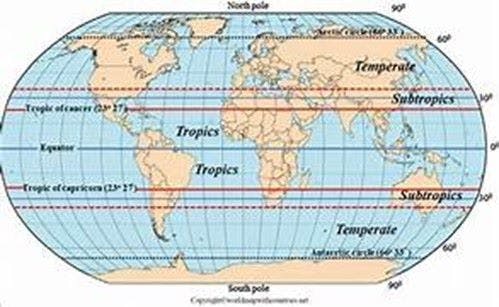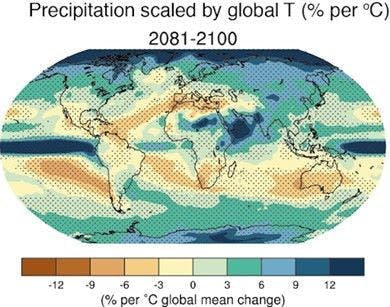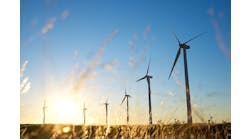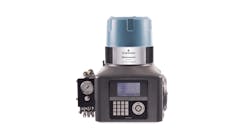The edges of the tropics are moving at a rate of about 0.2 - 0.3° latitude per decade (to the north and the south). A desert’s edges are defined as the lines inside which rainfall is less than 4 inches per year. According to some studies, the dry southern edge of the Sahara moved nearly 81 miles south in the 10 years between 1980 and 1990.
In specific locations, precipitation is affected by many variables other than global temperature. The color-coded zones in Figure 2 show the percent change in precipitation likely to occur due to a 1 °C global temperature increase. Zones where such a rise is projected to cause an increase in precipitation from 6-12% are colored in increasingly darker shades of blue. Zones where the same temperature rise will result in a drop in precipitation from 3 - 12% are colored from yellow to increasingly darker shades of brown.
Q: How much distance should be maintained from the orifice center hole to a drain (or vent) hole?
A1: Vent holes are as close to the edge of the pipe as possible because their purpose is to remove gas or liquid that otherwise changes the apparent pipe diameter if allowed to accumulate. The vent hole for liquid flow is at the top of the pipe to vent trapped gas. Similarly, the drain hole is at the bottom for gas flow to drain trapped liquid.
A2: The purpose of a drain (or vent) hole is to allow liquids (or gases) to pass through the orifice plate without building up on the front side. Consider a saturated steam line. If condensate begins to form in the bottom of the pipe, it carries down the pipe until it encounters the orifice plate where it will be trapped. The water continues to build in front of the plate until it gets high enough to pass through orifice bore and continue down the line. The liquid level in front of the pipe changes the flow profile and increases the fluid velocity, greatly impacting the orifice reading.
If the orifice plate has a drain hole located near the wall of the pipe, and the drain hole is mounted on the bottom, the water will pass through the hole and there will be minimal build up in front of the orifice. The same is true for a vent hole in a liquid line. In this case, the vent is located at the top, near the pipe wall, and lets vapor to travel down line and through the orifice without building up in front.
A3: The location of the orifice drain/weep hole should be as close as possible to the nominal pipe-size diameter, which is 90% to 98% of the nominal size. The bottom drain hole is located below the orifice and diametrically opposed to the handle. The top weep hole is located above the orifice and directly beneath the handle. The size of these drain/weep holes should be less than 10% of the total flow, so it affects the total flow by less than approximately 1%.
The distance between these holes and the actual orifice depends on the following: in a concentric orifice plate, the orifice opening is in the center of the plate with a β ratio between 0.25 and 0.75. The drain/weep holes are located between 90% and 98% of the pipe diameter, and have a diameter of their own of 10% of the orifice.
So, if we have a 6-inch ANSI Schedule 40 pipe, where the inside nominal diameter is 6.065 inches and outside diameter is 6.625 inches, and if we have chosen a β ratio of 0.5, then the orifice diameter is 6.065 inches x 0.5%, which means the orifice is 3.03 inches in diameter and centered 4.55 inches from the inside edge of the pipe. This ratio is assumed as a result of previously run flow calculations.
If the size of the drain/weep hole is maintained as 10% of the β ratio, then the drain/weep hole is 0.30 inches and located approximately at 95% of the inside diameter of the pipe or 6.065 inches x 95%. This would mean the drain/weep hole is centered at 5.76175 inches. And, since we calculated it at 0.30 inches, the opening would be 5.61 inches from the center and 5.91 inches from the pipe edge. Therefore, the distance of the drain/weep from the orifice is 1.06 inches.
You also need to know whether you need a drain/weep hole at all. Does your process fluid have particulates or other contaminants that would:
- Damage the orifice plate if they flow through;
- Cause variations of the flow measurement, and, if so, what is the impact?; and
- If the overall accuracy of measurement will be affected by contaminants.
If you need a drain/weep hole, the next important task is to determine the size of the particles to be passed and how their dimensions affect the overall flow measurement by impacting the β ratio. Finally, the actual dimensioning of drain/weep holes should be maintained, so they don’t affect flow calculations.







